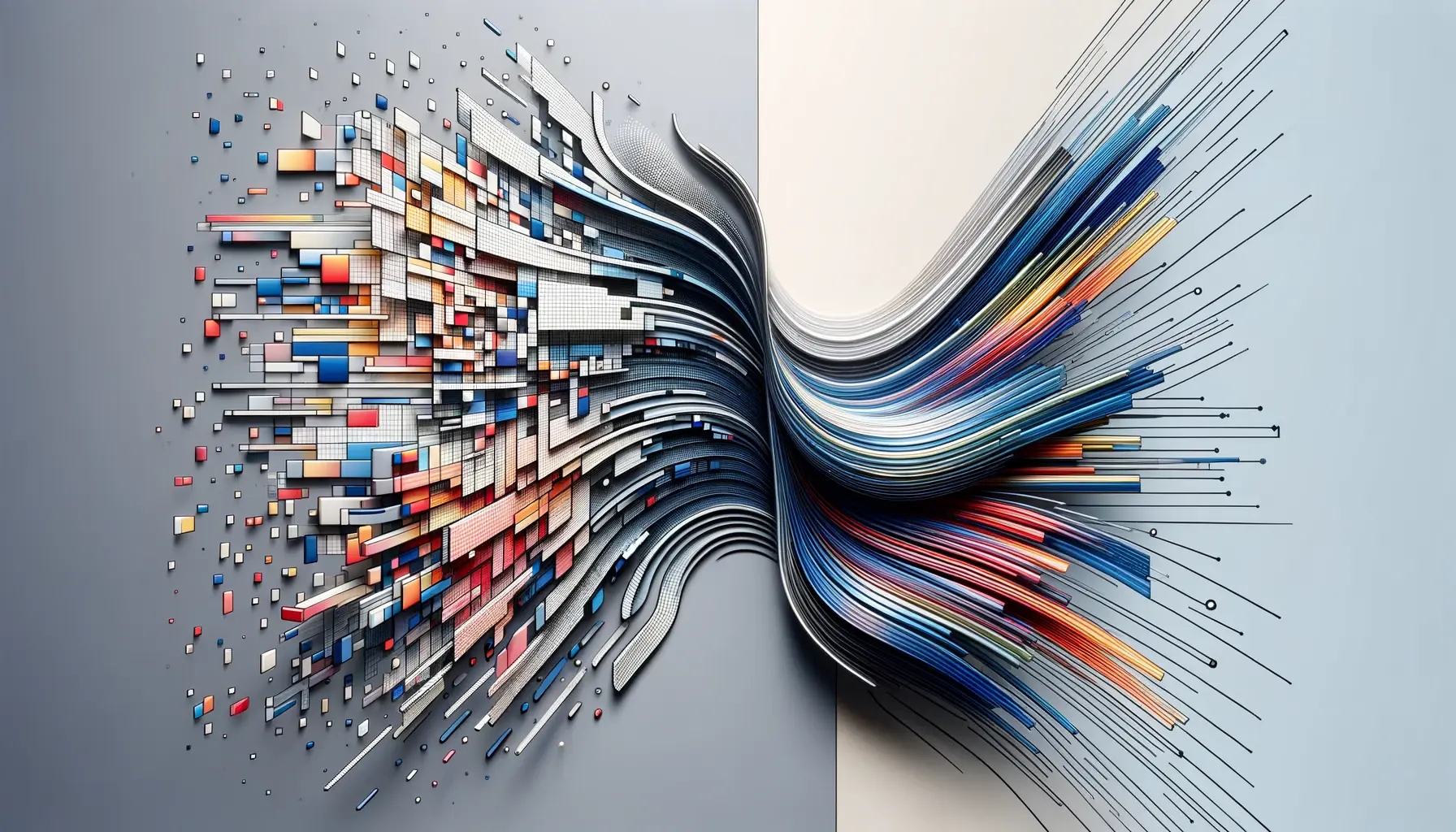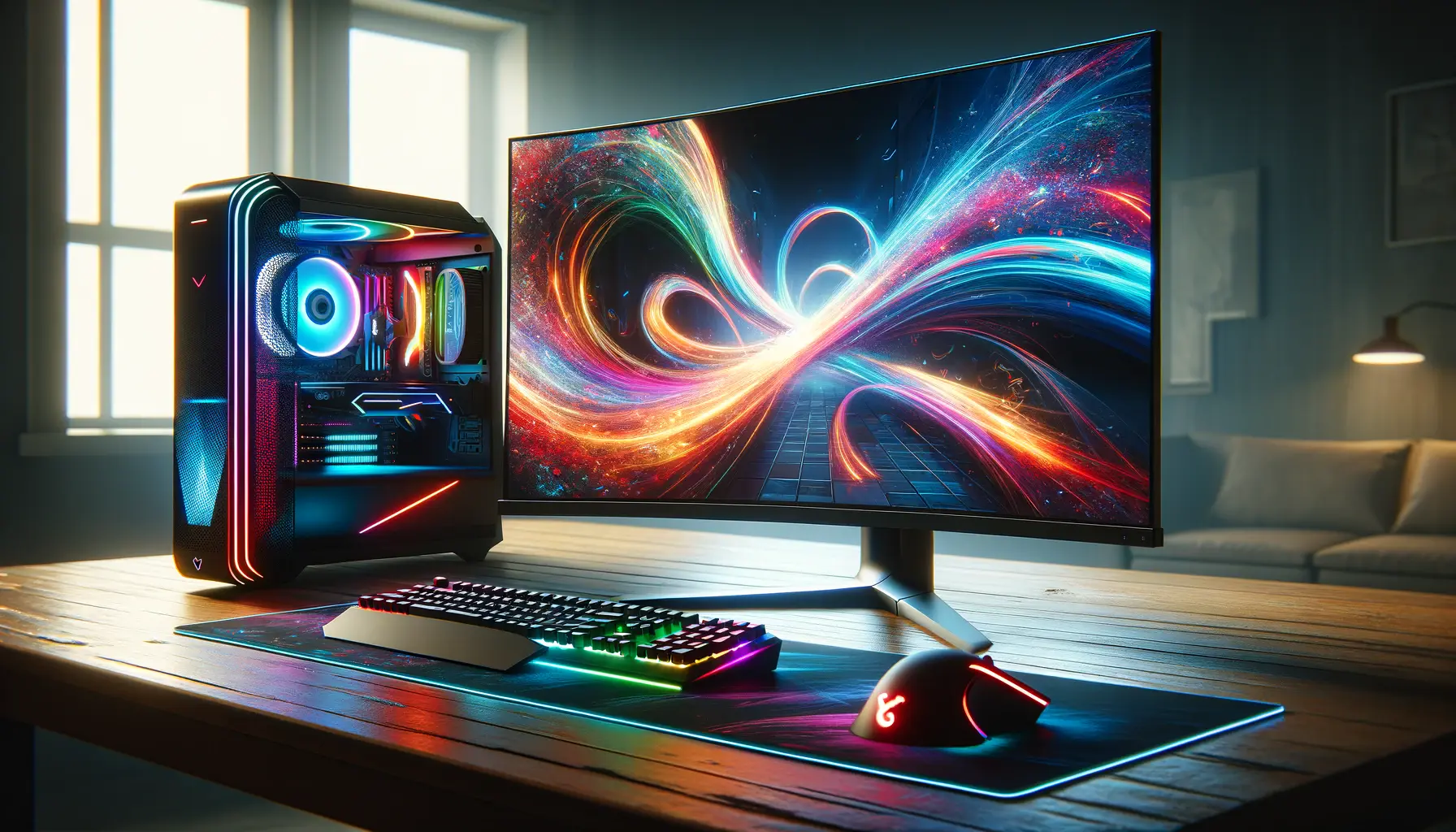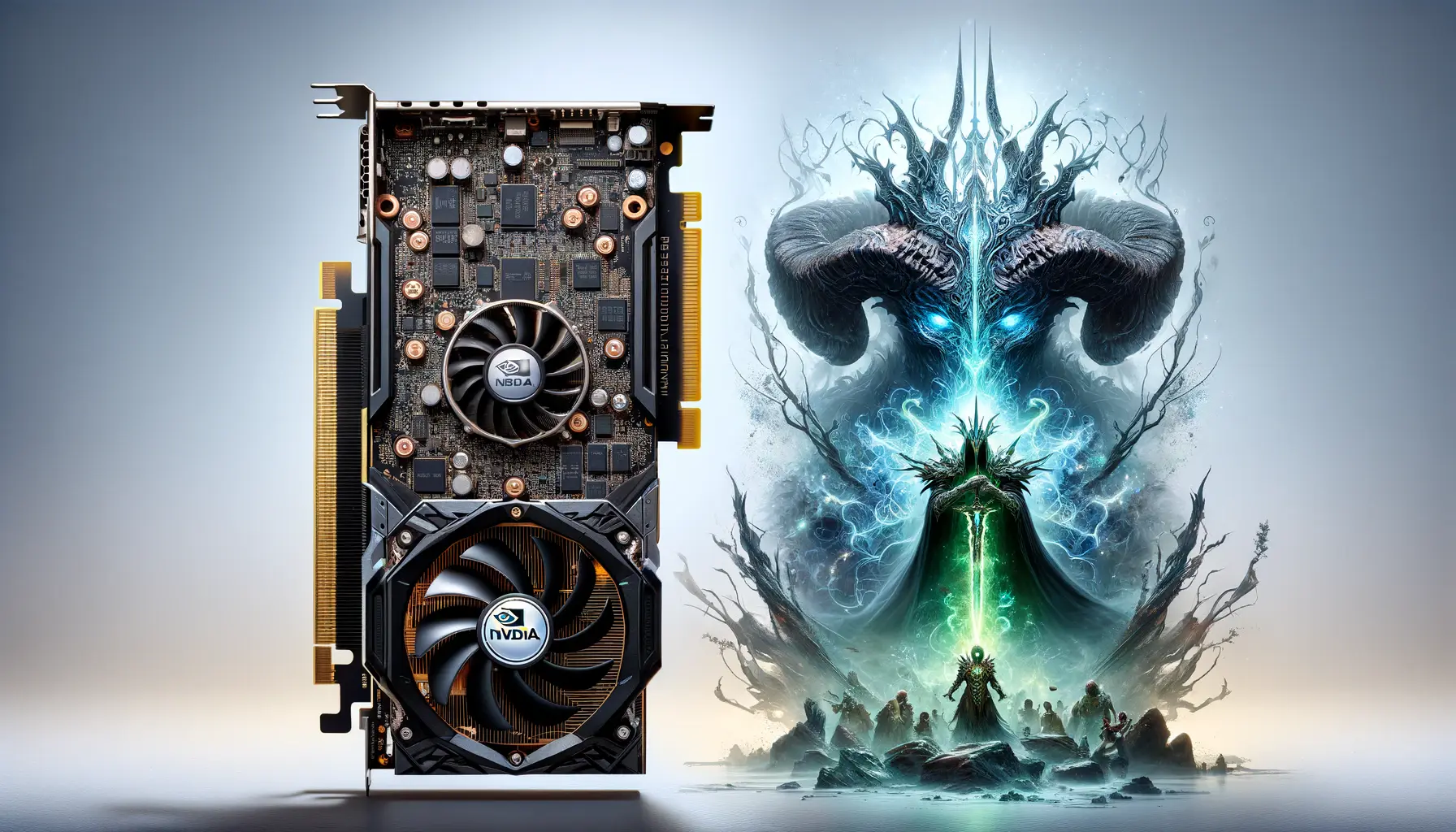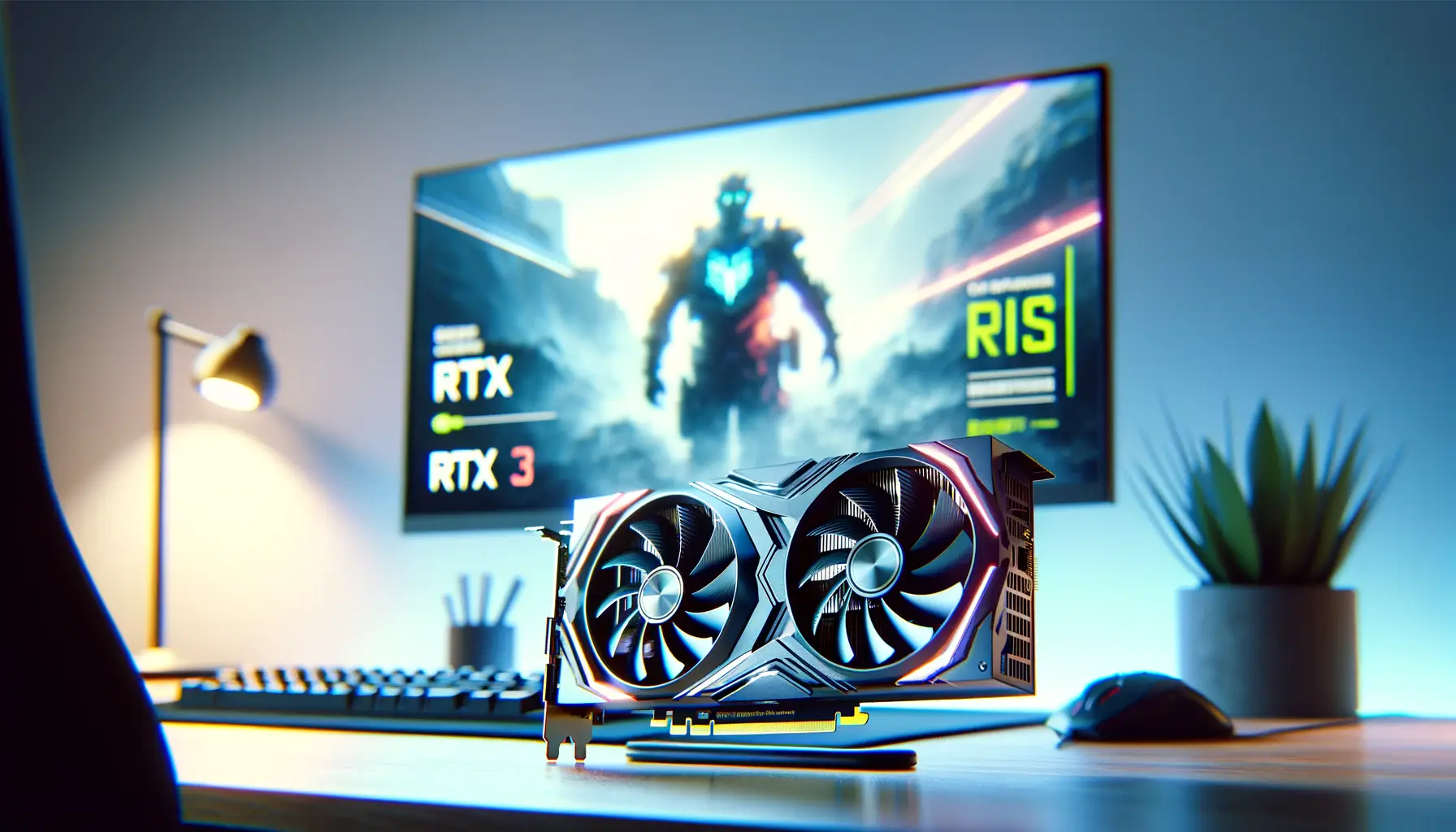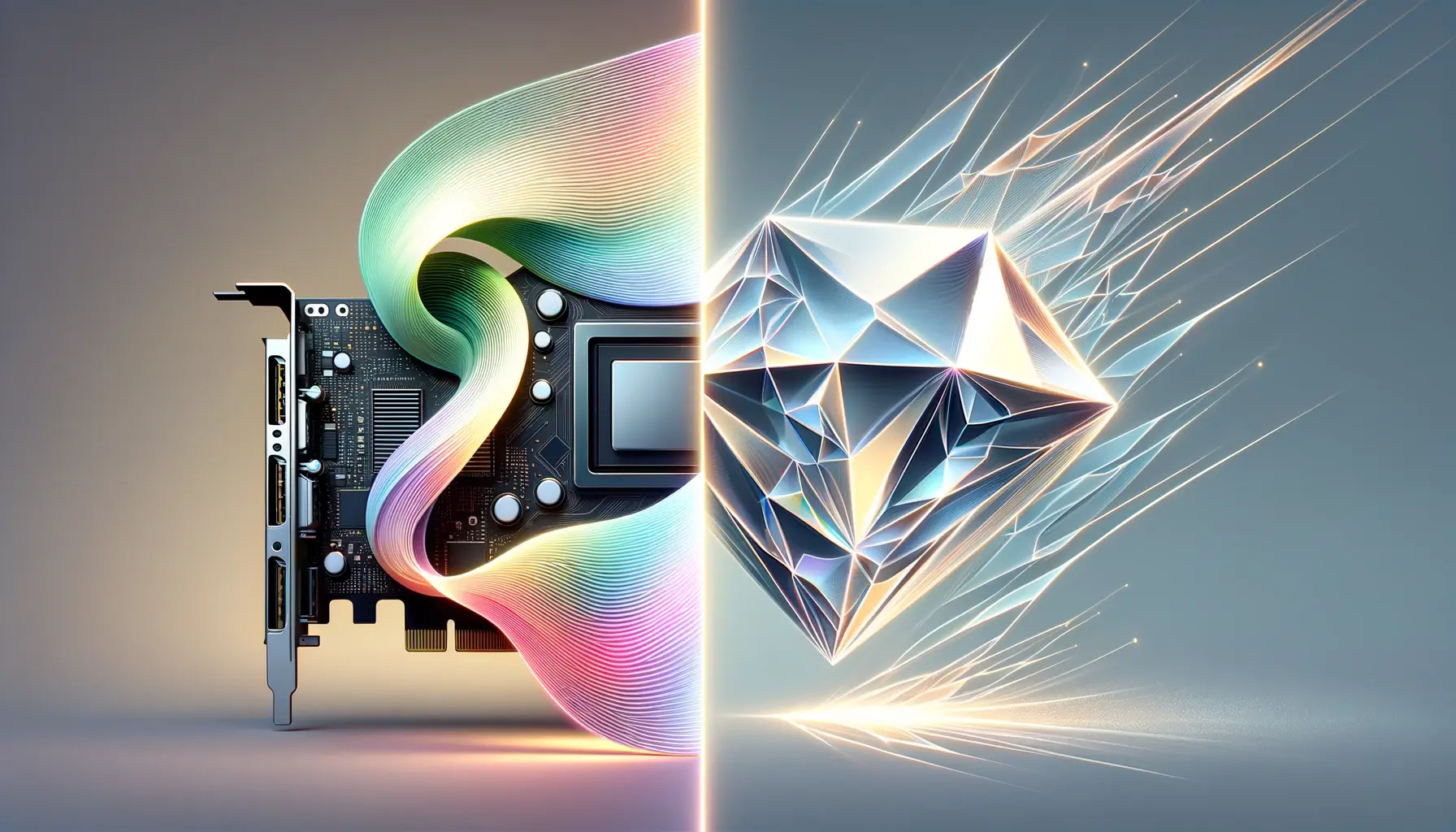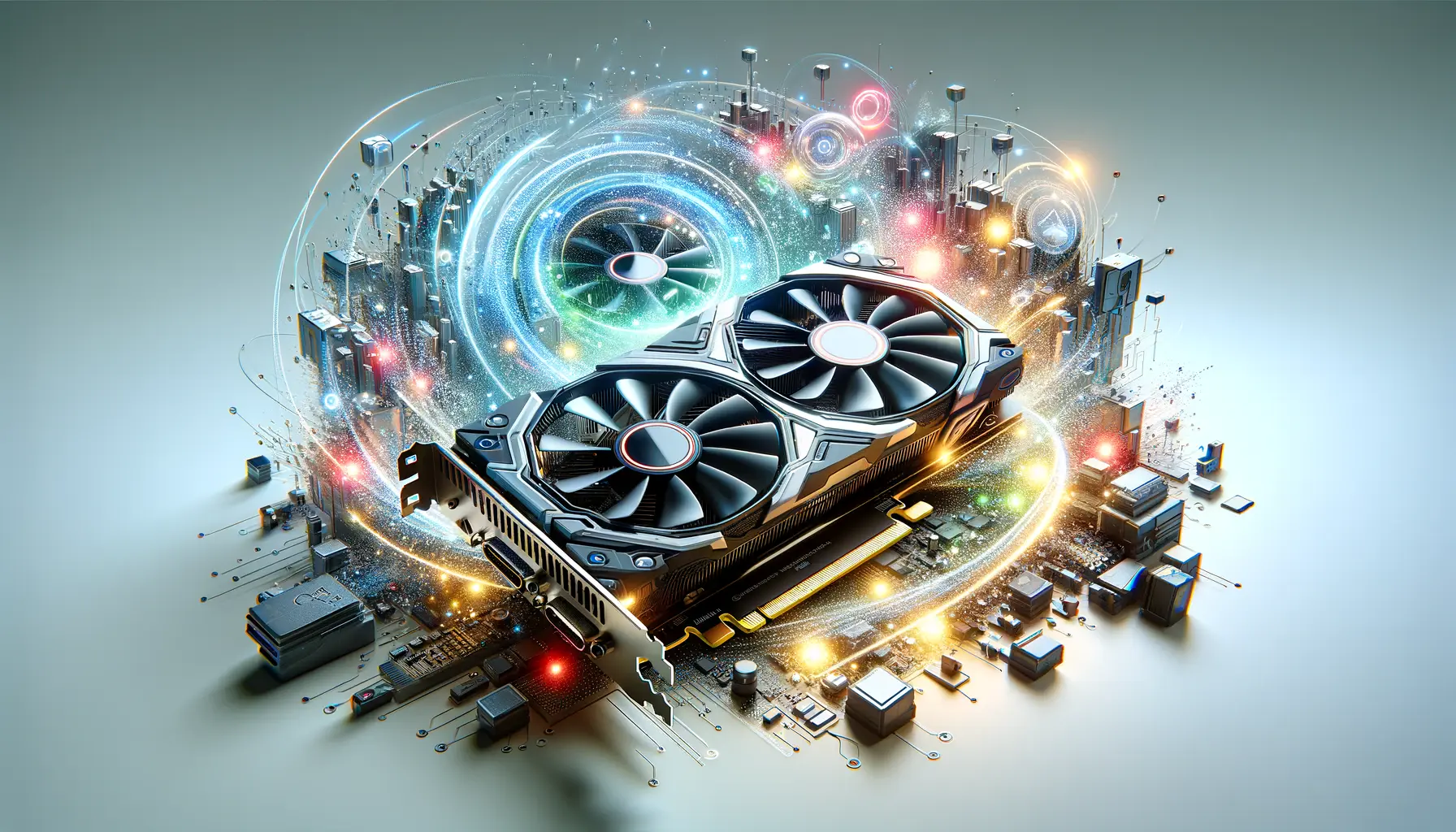Deep Learning Super Sampling (DLSS) technology by NVIDIA has been a game-changer in the realm of gaming and graphics, offering a significant boost in performance without compromising on visual quality.
With the introduction of DLSS 3, NVIDIA promises to elevate this experience further, addressing critical challenges such as artifacts and motion handling.
This advancement is not just a leap in rendering technology but a stride towards achieving photorealistic graphics in real-time applications.
DLSS 3 harnesses the power of artificial intelligence to upscale images in a way that mimics higher resolution displays, all the while maintaining smooth frame rates that are crucial for a seamless gaming experience.
However, the technology’s true test lies in its ability to handle motion and reduce artifacts – issues that have been persistent thorns in the side of previous upscaling methods.
By focusing on these aspects, DLSS 3 aims to provide a solution that not only enhances performance but also ensures the integrity of the visual output.
- Understanding DLSS and Its Evolution
- Artifacts in DLSS: Identification and Solutions
- DLSS 3 and Motion Handling
- Comparative Analysis: DLSS 3 vs. Previous Versions
- DLSS 3 in Action: Real-World Applications
- Challenges and Limitations of DLSS 3
- Future Directions of DLSS Technology
- Embracing the Future with DLSS 3
- DLSS 3: Frequently Asked Questions
Understanding DLSS and Its Evolution
What is DLSS?
At its core, Deep Learning Super Sampling (DLSS) is an NVIDIA-developed AI rendering technology that increases graphics performance using dedicated Tensor Core AI processors on GeForce RTX GPUs.
This technology allows games to be rendered at a lower resolution and then upscaled to a higher resolution, offering improved frame rates without a noticeable loss in image quality.
The process involves a deep learning neural network that learns from thousands of images to produce images that look as sharp and detailed as higher resolution images.
Since its inception, DLSS has undergone several iterations, each improving upon the last.
The initial version offered promising results but was criticized for its tendency to produce blurry images and artifacts.
NVIDIA took this feedback and released DLSS 2.0, which significantly improved image quality and flexibility.
DLSS 2.0 introduced a single, general AI model that could be applied across all games, making it easier for developers to implement and refine the technology for their titles.
The Leap to DLSS 3
DLSS 3 represents the latest evolution, promising to tackle the challenges of motion handling and artifact reduction head-on.
This version introduces frame generation technology alongside the existing upscaling techniques, creating additional frames to smooth out motion in fast-paced scenes.
This is particularly beneficial in gaming, where rapid movements can often lead to jarring visual experiences.
By generating intermediate frames, DLSS 3 aims to provide a fluid motion that closely mimics natural movement, enhancing the overall immersion of the game.
Another significant improvement in DLSS 3 is its enhanced ability to reduce artifacts.
Artifacts, which can manifest as blurring, ghosting, or flickering, detract from the visual quality and can break the immersion in a game.
DLSS 3’s advanced AI algorithms have been trained to identify and minimize these issues, ensuring that the upscaled images are not only smooth but also free of common visual imperfections.
DLSS 3’s introduction of frame generation and improved artifact reduction represents a significant leap forward in AI-based image upscaling, offering gamers and content creators alike a tool that significantly enhances performance without sacrificing visual fidelity.
Artifacts in DLSS: Identification and Solutions
One of the most critical aspects of DLSS 3’s development has been addressing and mitigating artifacts, which are unintended anomalies or distortions in digital images.
These artifacts can significantly detract from the gaming experience, making the visual output appear less realistic or even distracting.
Understanding the types of artifacts and how DLSS 3 addresses them is key to appreciating the technology’s advancements.
Artifacts commonly associated with image upscaling and rendering include blurring, ghosting, and flickering.
Blurring occurs when the image loses its sharpness, ghosting presents as trailing images behind moving objects, and flickering is seen as rapid changes in brightness or color.
Each of these can disrupt the immersive experience that games strive to provide.
- Blurring: DLSS 3 combats blurring by utilizing AI to intelligently upscale images, ensuring that details are preserved and even enhanced during the process. The AI model is trained on a vast array of high-resolution images, allowing it to predict and fill in details with remarkable accuracy.
- Ghosting: To reduce ghosting, DLSS 3 employs advanced motion vectors and frame generation techniques. By accurately tracking the movement of objects across frames, DLSS 3 can generate intermediate frames that smooth out transitions and reduce the appearance of trailing images.
- Flickering: Flickering is addressed through DLSS 3’s temporal feedback techniques, which analyze not just the current frame but also previous frames to ensure consistency in lighting and color. This helps to stabilize the image and prevent the rapid changes that lead to flickering.
By focusing on these specific types of artifacts, DLSS 3 enhances the visual quality of games, making them appear more fluid and lifelike.
The technology’s ability to learn and adapt means that it continuously improves, offering better performance and fewer artifacts over time.
The continuous improvement of DLSS through versions underscores NVIDIA’s commitment to refining AI-based rendering, making it increasingly appealing for both developers and gamers.
DLSS 3 and Motion Handling
Enhancing motion handling is at the forefront of DLSS 3’s technological advancements.
The goal is to deliver a seamless and fluid visual experience, especially in fast-paced gaming scenarios where every frame counts.
DLSS 3 introduces innovative solutions to achieve this, focusing on frame generation and interpolation techniques that significantly improve the perception of motion.
Frame Generation Explained
DLSS 3’s frame generation technology is a groundbreaking feature that creates additional frames between existing ones, effectively increasing the game’s frame rate without the need for additional computational power from the game engine.
This process not only smooths out motion but also contributes to a more stable and responsive gaming experience.
- How it Works: Utilizing the dedicated Tensor Cores on RTX GPUs, DLSS 3 analyzes two consecutive frames to predict and generate intermediate frames. This prediction is based on the motion observed in the scene, ensuring that the generated frames align seamlessly with the game’s natural movement.
- Benefits: The immediate benefit is smoother gameplay, particularly noticeable in fast-moving scenes where motion blur and judder can detract from the experience. By interpolating frames, DLSS 3 ensures that motion across the screen is rendered more fluidly, enhancing overall immersion.
Impact on Gaming Experience
The introduction of frame generation and improved motion handling in DLSS 3 has a profound impact on the gaming experience.
Games that previously suffered from choppy frame rates or noticeable motion artifacts can now be enjoyed with unparalleled smoothness, bringing them closer to the developers’ original vision.
- Enhanced Immersion: Smoother motion contributes to a more immersive gaming experience, making virtual environments feel more realistic and engaging.
- Competitive Advantage: For competitive gamers, the improved motion handling and increased frame rates can provide a tangible advantage, making it easier to track moving targets and react to fast-paced action.
The innovative frame generation technique of DLSS 3 not only enhances visual quality but also redefines what gamers can expect in terms of performance and fluidity, setting a new standard for future rendering technologies.
Comparative Analysis: DLSS 3 vs. Previous Versions
The evolution of NVIDIA’s DLSS technology has been marked by significant milestones, with each version introducing improvements aimed at enhancing image quality and gaming performance.
DLSS 3, the latest iteration, stands out not only for its advanced AI-driven capabilities but also for its innovative approach to motion handling and artifact reduction.
A comparative analysis of DLSS 3 against its predecessors highlights the strides NVIDIA has made in AI-based rendering technologies.
Improvements from DLSS 2.0 to DLSS 3
DLSS 2.0 was a major leap forward, introducing a more flexible and efficient AI model that could be applied across a wide range of games without the need for per-game training.
This version was praised for its significant improvements in image quality and performance enhancement.
However, DLSS 3 takes these advancements further by incorporating frame generation technology, which addresses one of the most challenging aspects of gaming visuals: motion.
- Frame Rate Enhancement: While DLSS 2.0 improved frame rates through more efficient rendering, DLSS 3 elevates this by generating additional frames, effectively doubling the perceived smoothness in fast-paced scenarios.
- Artifact Reduction: DLSS 3 employs more sophisticated AI algorithms to minimize common artifacts such as blurring, ghosting, and flickering, resulting in cleaner and more stable images.
- Motion Handling: The introduction of frame generation in DLSS 3 specifically targets the improvement of motion handling, offering a fluidity that closely mimics natural movement, a feature not directly addressed in previous versions.
User Experience and Performance
The enhancements brought by DLSS 3 have a direct impact on the user experience, offering not just higher frame rates but also a qualitative improvement in how games are perceived visually.
Gamers can now enjoy their favorite titles with unprecedented smoothness and clarity, pushing the boundaries of what current hardware can achieve.
- Visual Fidelity: DLSS 3’s advanced AI model ensures that upscaling does not compromise on detail, maintaining high visual fidelity even at lower base resolutions.
- Reduced Latency: By optimizing the way frames are generated and rendered, DLSS 3 also contributes to reduced latency, ensuring that the input from gamers is reflected on-screen with minimal delay.
DLSS 3 represents the culmination of NVIDIA’s efforts in AI-driven rendering, setting a new benchmark for performance and visual quality that significantly enhances the gaming experience.
DLSS 3 in Action: Real-World Applications
DLSS 3’s impact extends beyond theoretical advancements, finding its place in real-world applications that showcase its potential to transform gaming and content creation.
By examining how DLSS 3 has been implemented in various scenarios, we can better understand its benefits and the future direction of AI-driven rendering technologies.
Enhancing Gaming Experiences
DLSS 3 has been integrated into a number of high-profile games, offering players enhanced visuals and smoother gameplay.
Titles such as “Cyberpunk 2077” and “Fortnite” have seen significant improvements in performance, with DLSS 3 enabling higher frame rates without sacrificing image quality.
This has been particularly beneficial for gamers with mid-range hardware, allowing them to experience games at higher settings than previously possible.
- Increased Frame Rates: Gamers report smoother gameplay and reduced motion blur, thanks to DLSS 3’s frame generation technology.
- Improved Visual Quality: The reduction of artifacts and the preservation of detail result in a more immersive gaming experience.
Content Creation and Streaming
DLSS 3’s applications are not limited to gaming.
Content creators and streamers can also benefit from the technology, particularly those who rely on real-time rendering for their work.
By improving performance and visual fidelity, DLSS 3 allows for smoother video production and streaming, even in resource-intensive scenarios.
- Efficient Rendering: Content creators working with 3D modeling and animation software can achieve faster rendering times, enabling more efficient workflows.
- High-Quality Streaming: Streamers can deliver higher quality content to their viewers, thanks to DLSS 3’s ability to upscale video in real-time without degrading performance.
The real-world applications of DLSS 3 demonstrate its versatility and effectiveness in enhancing both gaming and content creation, marking a significant step forward in the utilization of AI for visual rendering.
Challenges and Limitations of DLSS 3
While DLSS 3 represents a significant advancement in rendering technology, it is not without its challenges and limitations.
Understanding these hurdles is crucial for both developers and users to set realistic expectations and identify areas for future improvement.
Hardware Requirements
One of the primary challenges associated with DLSS 3 is its hardware requirements.
The technology relies on the Tensor Cores found in NVIDIA’s RTX series GPUs, limiting its availability to users with compatible hardware.
This requirement can pose a barrier to entry for those with older or non-RTX graphics cards, potentially excluding a segment of the gaming and content creation communities.
- Exclusivity to RTX GPUs: DLSS 3’s reliance on Tensor Cores means it’s only available on NVIDIA’s RTX series, requiring users to invest in specific hardware to benefit from the technology.
- Impact on Adoption Rates: The hardware exclusivity may slow the adoption rate of DLSS 3, as not all users are willing or able to upgrade their systems.
Game Integration
Another limitation of DLSS 3 is the need for game developers to integrate the technology into their titles.
While NVIDIA provides tools and support to facilitate this process, the integration still requires time and resources.
This can lead to a varied implementation of DLSS 3 across different games, with some benefiting more than others from the technology’s capabilities.
- Varying Levels of Support: The effectiveness of DLSS 3 can differ from game to game, depending on how well it’s integrated by the developers.
- Development Resources: Smaller studios may find it challenging to allocate the necessary resources for DLSS 3 integration, potentially limiting its presence in indie titles.
Despite its challenges and limitations, DLSS 3’s impact on rendering technology is undeniable, offering a glimpse into the future of gaming and content creation. As hardware becomes more accessible and integration support improves, DLSS 3 is poised to become even more influential in shaping the visual landscape of digital media.
Future Directions of DLSS Technology
The journey of Deep Learning Super Sampling (DLSS) technology is far from over.
With each iteration, NVIDIA has pushed the boundaries of what’s possible in rendering technology, and DLSS 3 is no exception.
As we look to the future, several potential directions could further revolutionize how we experience digital content, from gaming to professional applications.
Broader Hardware Compatibility
One of the most anticipated developments for DLSS technology is broader hardware compatibility.
Expanding DLSS beyond NVIDIA’s RTX series to include older models and potentially other hardware platforms would make the technology accessible to a wider audience.
This expansion could democratize high-quality rendering, allowing more users to benefit from improved performance and visual fidelity.
- Integration with Non-RTX GPUs: Exploring ways to adapt DLSS for use with older or non-NVIDIA GPUs could significantly increase its usability and adoption.
- Collaboration with Console Manufacturers: Bringing DLSS technology to gaming consoles could enhance the visual quality of console games, bridging the gap between console and PC gaming experiences.
Enhanced AI Models
Continued advancements in AI and machine learning offer exciting possibilities for the evolution of DLSS.
By developing more sophisticated AI models, NVIDIA can further improve the accuracy of frame generation and artifact reduction, leading to even higher quality visuals with minimal performance impact.
- Real-time Learning: Future versions of DLSS could incorporate real-time learning capabilities, allowing the AI to adapt and improve based on the specific content it encounters.
- Customizable AI Models: Offering customizable AI models that developers can train specifically for their games or applications could optimize DLSS’s performance and visual output for individual titles.
The potential for DLSS technology is vast, with ongoing research and development poised to unlock new capabilities and applications. As AI models become more advanced and hardware compatibility expands, DLSS could redefine the standards for rendering technology, making high-quality visuals more accessible than ever before.
Embracing the Future with DLSS 3
The journey through the intricacies of DLSS 3, from its inception to its current state and potential future, reveals a technology poised at the brink of revolutionizing digital visual experiences.
NVIDIA’s DLSS 3, with its deep learning and AI-driven capabilities, stands as a testament to the relentless pursuit of excellence in the realm of graphics rendering.
As we’ve explored the evolution, applications, and the challenges of DLSS 3, it’s clear that this technology is not just an incremental update but a significant leap forward in achieving photorealistic visuals in real-time applications.
The Path Forward for DLSS 3
As DLSS 3 continues to evolve, its journey is marked by the potential to redefine gaming, content creation, and any field that relies on high-quality visual rendering.
The anticipation for broader hardware compatibility and even more advanced AI models speaks to a future where DLSS technology could become ubiquitous, transcending the boundaries of current hardware limitations and setting new benchmarks for visual fidelity.
- Expansion to a wider range of hardware, making DLSS 3 accessible to a broader audience and democratizing high-quality gaming experiences.
- Advancements in AI and machine learning algorithms that promise even more significant improvements in rendering efficiency and visual quality.
- The potential integration of DLSS technology into new platforms and devices, opening up unprecedented opportunities for innovation in digital visuals.
In conclusion, DLSS 3 represents a pivotal point in the evolution of rendering technologies.
Its ability to handle artifacts and motion with unparalleled finesse has set a new standard for what gamers and professionals can expect from their digital experiences.
As NVIDIA continues to refine and expand the capabilities of DLSS, the future looks bright for everyone who values the intersection of performance and visual excellence.
The journey of DLSS 3 is far from over, and its continued development will undoubtedly shape the future of digital imagery, making i
DLSS 3: Frequently Asked Questions
Explore the most common inquiries about NVIDIA’s DLSS 3 technology and its impact on gaming and rendering.
DLSS 3 is NVIDIA’s AI-accelerated resolution rendering technology, designed to boost frame rates and enhance performance in games and applications.
DLSS 3 utilizes AI to upscale images, improving performance by generating additional frames and reducing artifacts for smoother visuals.
No, DLSS 3 is supported exclusively on GeForce RTX 40 Series GPUs, leveraging their advanced AI processing capabilities.
Yes, DLSS 3 enhances game visuals by upscaling images to higher resolutions while maintaining or improving frame rates.
DLSS 3 includes NVIDIA Reflex to reduce latency, ensuring responsive gameplay alongside visual enhancements.
